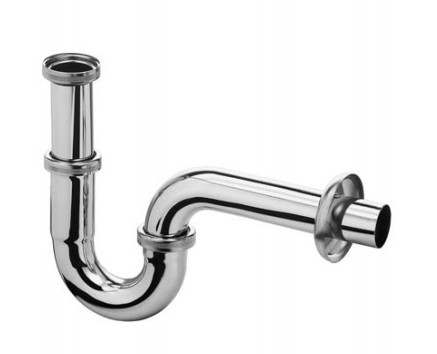

What is the Purpose of a P-Trap?
Plumbing systems are intricate networks designed to ensure the proper flow of water and waste while maintaining hygiene and safety. Among the numerous components in a plumbing setup, the P-trap is one of the most essential. Its unique design and function are crucial for maintaining a healthy and odor-free environment in residential and commercial properties. This article delves into the purpose of a P-trap, its components, and its role in modern plumbing systems.

Understanding the P-Trap
A P-trap is a U-shaped pipe fixture beneath sinks, showers, bathtubs, and other plumbing fixtures. This simple yet ingenious component is made up of:
- Curved Pipe Section: The “P” shape traps water to form a barrier.
- Threaded Connections: Allow for easy installation and removal during maintenance.
- Cleanout Plug: Found on some P-traps, this facilitates the removal of clogs.
P-traps can be constructed from materials such as PVC, ABS, or metal, depending on the application and local plumbing codes.
Primary Purpose of a P-Trap
Preventing Sewer Gases from Entering
The main function of a P-trap is to create a water seal that blocks sewer gases from escaping into your home. These gases, which include methane and hydrogen sulfide, can be harmful to health and unpleasant in odor. The water sitting in the bend of the P-trap acts as a barrier, effectively isolating your living space from the sewer system.
Yes! More than just for water, those pipes help keep your home safe and smelling clean.

Trapping Debris
Items like jewelry, hair, or food particles often get trapped in the curved section, preventing them from clogging the main plumbing lines. This not only makes recovery of lost items possible but also simplifies cleaning and maintenance.
Facilitating Drain Maintenance
P-traps often come with a clean out feature, enabling plumbers to clear blockages without dismantling the entire plumbing setup. This accessibility reduces repair time and costs, ensuring a more efficient plumbing system.
Common Issues with P-Traps
Despite their simplicity, P-traps can encounter problems that compromise their functionality. Understanding these issues helps in early identification and resolution:
Dry P-Traps
When a fixture is not used for an extended period, the water in the P-trap can evaporate, breaking the seal and allowing sewer gases to enter. Regularly running water through unused fixtures can prevent this issue.
Clogs and Blockages
Debris accumulation in the P-trap can lead to blockages, causing slow drainage or complete backups. Regular cleaning and the use of strainers can minimize this concern.
Leaks
P-traps can develop leaks due to loose connections, corrosion, or cracks. Periodic inspections can identify potential difficulties before they escalate.
Importance of P-Traps in Building Codes
P-traps are mandated by plumbing codes worldwide due to their role in maintaining public health and safety. Local codes often specify:
- Minimum Water Seal Depth: Ensures sufficient protection against sewer gases.
- Approved Materials: Guarantees durability and compatibility with other plumbing components.
- Proper Installation: Prevents issues such as siphoning or improper drainage.
Compliance with these codes is essential for homeowners and contractors to avoid penalties and ensure safe plumbing practices.

Maintenance Tips for P-Traps
To keep your P-trap functioning optimally, follow these maintenance tips:
- Run Water Regularly: Prevent the trap from drying out by running water in seldom-used fixtures.
- Use Drain Strainers: Minimize debris entering the drain.
- Clean Periodically: Remove the P-trap to clear accumulated debris.
- Inspect for Leaks: Check for and repair any loose or damaged connections.
- Avoid Chemical Cleaners: These can damage the material and reduce the lifespan of the P-trap.
Replacing a Faulty P-Trap
If your P-trap is beyond repair, replacing it is a straightforward process. Here’s how:
- Turn Off Water Supply: Prevent any accidental spills.
- Unscrew Connections: Use pliers to loosen the slip nuts.
- Remove the Old P-Trap: Carefully take it out and dispose of it properly.
- Install the New P-Trap: Ensure all connections are secure and watertight.
- Test for Leaks: Run water to check the installation.
Hiring a professional plumber is recommended for those unfamiliar with plumbing systems.

Conclusion
The P-trap is an indispensable component of modern plumbing, safeguarding homes and businesses from harmful sewer gases while facilitating efficient waste removal. Regular maintenance and adherence to local plumbing codes ensure its longevity and effectiveness. By understanding its purpose and proper care, you can maintain a functional and safe plumbing system.
Related Posts
© 2025 Invastor. All Rights Reserved

User Comments